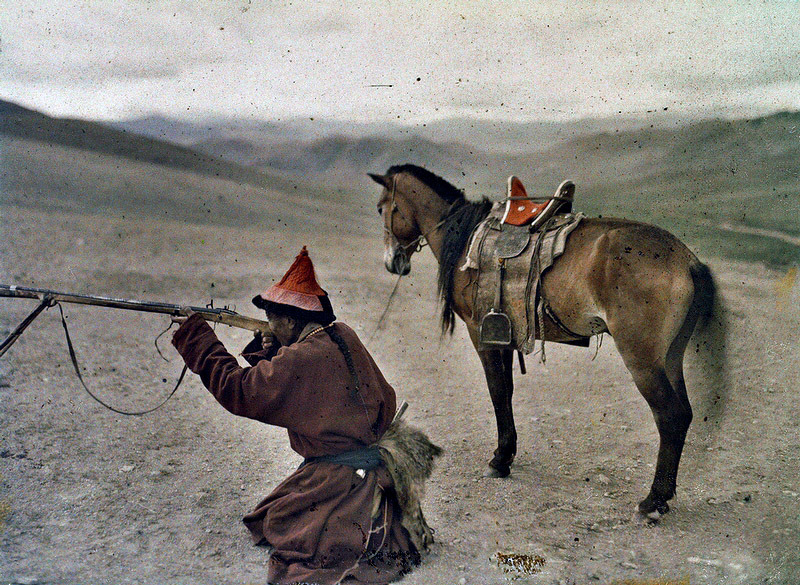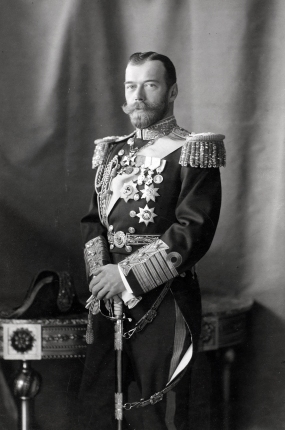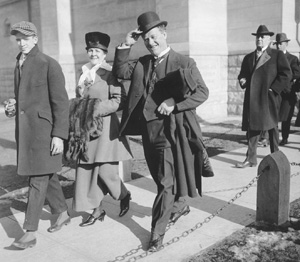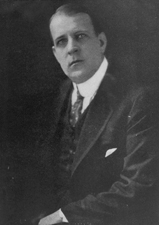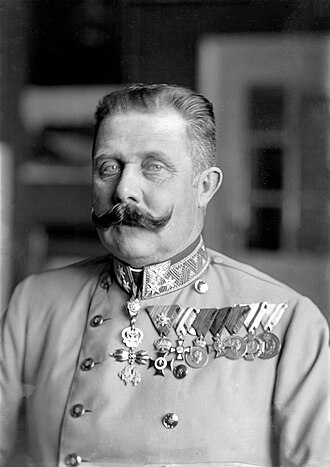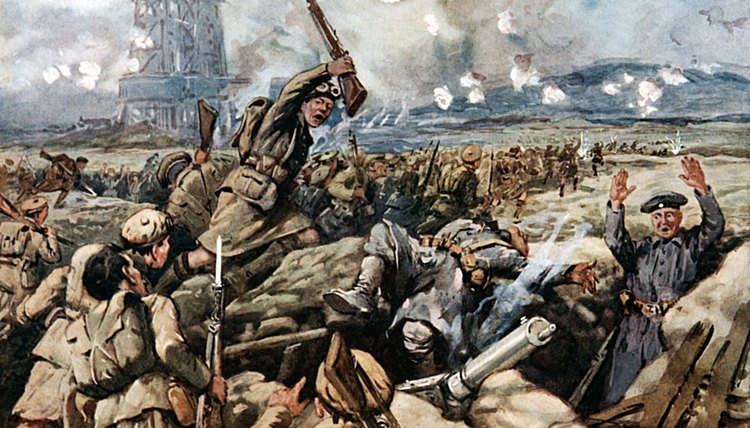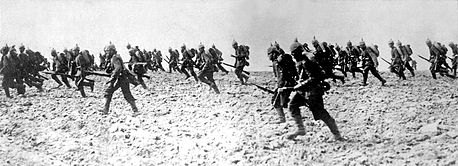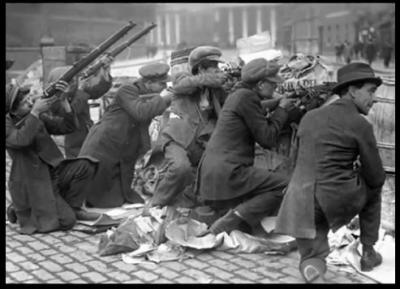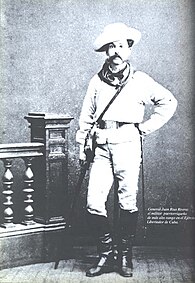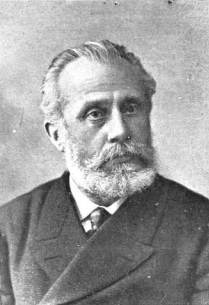Theodore Roosevelt came into office as twenty-seventh President of the United States with widespread support. Even those who didn’t vote for him came to like the man. After 16 years of Democratic rule, Republicans had high hopes that the Executive Mansion would once again be dominated by the GOP. Roosevelt, in stark contrast to his predecessor, believed in a strong and active executive branch. He was not hesitant to use executive order as a means of enacting his agenda. Roosevelt was clearly in the party’s progressive wing, though he was much more palatable to the Eastern establishment than Robert La Follette. The 1910s can be seen as a high point for American progressivism as both major parties became dominated by their progressive wings. The Republican Party, which resisted progressive policies when Bryan was in office, now was often the driving force behind such reforms.
-Excerpt from The Guide to the Executive Mansion, an in Depth Look at America's Presidents, Benjamin Buckley, Harvard Press, 1999.
Roosevelt soon got to work on building his presidential cabinet. He chose Ohio Senator Joseph B. Foraker as Secretary of State. Lyman Gage of Iowa was chosen as Secretary of the Treasury (this gave some diehard Gold Standard supporters false hope for the new administration). Representative Elihu Root of New York was chosen as Secretary of War. His Attorney General was Charles Evans Hughes. For Postmaster General, 1904 Presidential nominee Robert La Follette was selected, though the two would clash later on in Roosevelt’s presidency. Rhode Island Senator Nelson W. Aldrich became Secretary of the Navy. His Secretary of the Interior was Fred Dubois, who served in that same position in the Bryan administration. And finally, the new Secretary of Agriculture would be Representative Frank Hanly of Indiana.
At the beginning of Roosevelt’s Presidency, the Seventeenth Amendment to the United States Constitution was ratified. Now, an income tax could be collected by the federal government. Roosevelt was a strong supporter of Bryan’s conservation policy, and doubled the amount of land set aside by the Bryan and Dewey governments. Seeing much of his agenda advancing, Bryan returned to politics and was elected Senator. He looked forward to working with Roosevelt. Roosevelt had been on Bryan’s side on many issues when he was a Representative. Senator Bryan and President Roosevelt worked together during the first few years of the Roosevelt’s Presidency. The two even went on a hunting trip together. Roosevelt was able to accomplish even more than Bryan in many areas. Roosevelt faced much less opposition from Congress and the Supreme Court. From conservation to regulation to trust-busting, Roosevelt went even further than Bryan.
There was one very important area of disagreement between Roosevelt and Bryan’s Progressivism. This difference was in foreign policy. Roosevelt did not share Bryan’s views on war. While Dewey established a small American presence on the Philippines, Roosevelt increased it dramatically. The islands began to be referred to as an American colony. In 1912 America became involved in an internal conflict in the country. The majority-Muslim islands tried to break away from the Philippines and form the Moro Sultanate. Many of these Moro rebels had fought the Spanish as well. The Philippine army was weak and failed to put down the rebellion. Thus, Philippine President Aguinaldo asked for American help. While there was some opposition to intervention within the US, thousands of soldiers were sent to crush the rebellion. After the defeat of the rebels American influence in the Philippines became even greater.

(American troops in the Philippines)
The Roosevelt administration also worked to advance the cause of civil rights in America. The Republican-controlled Congress tried to pass bills designed to help African-Americans. Racially-motivated violence had been increasing over the last decade and white supremacist movements were becoming more organized and effective. Most of this was in the South, but Northern anti-Semitic movements sprung up as well. Historians believe that this trend began in the election of 1904 as a reaction against efforts to mobilize black voters in the South. Further enraging supporters of the Jim Crow system was the brief period of Republican control in North Carolina, which saw attempts by the state government to protect the rights of African-Americans. While federal civil rights legislation was derailed by filibustering Democrat Senators, the Roosevelt administration hired a significant number of black federal employees. Many Democrats used Roosevelt's support for civil rights against Republicans, and the GOP did lose seats in the 1910 midterms. However, it was not enough to hand control of Congress over to the Democratic Party.
-Excerpt from America's Silver Age, Edward S. Scott, Patriot Publishers, 2017.
-Excerpt from The Guide to the Executive Mansion, an in Depth Look at America's Presidents, Benjamin Buckley, Harvard Press, 1999.
Roosevelt soon got to work on building his presidential cabinet. He chose Ohio Senator Joseph B. Foraker as Secretary of State. Lyman Gage of Iowa was chosen as Secretary of the Treasury (this gave some diehard Gold Standard supporters false hope for the new administration). Representative Elihu Root of New York was chosen as Secretary of War. His Attorney General was Charles Evans Hughes. For Postmaster General, 1904 Presidential nominee Robert La Follette was selected, though the two would clash later on in Roosevelt’s presidency. Rhode Island Senator Nelson W. Aldrich became Secretary of the Navy. His Secretary of the Interior was Fred Dubois, who served in that same position in the Bryan administration. And finally, the new Secretary of Agriculture would be Representative Frank Hanly of Indiana.
At the beginning of Roosevelt’s Presidency, the Seventeenth Amendment to the United States Constitution was ratified. Now, an income tax could be collected by the federal government. Roosevelt was a strong supporter of Bryan’s conservation policy, and doubled the amount of land set aside by the Bryan and Dewey governments. Seeing much of his agenda advancing, Bryan returned to politics and was elected Senator. He looked forward to working with Roosevelt. Roosevelt had been on Bryan’s side on many issues when he was a Representative. Senator Bryan and President Roosevelt worked together during the first few years of the Roosevelt’s Presidency. The two even went on a hunting trip together. Roosevelt was able to accomplish even more than Bryan in many areas. Roosevelt faced much less opposition from Congress and the Supreme Court. From conservation to regulation to trust-busting, Roosevelt went even further than Bryan.
There was one very important area of disagreement between Roosevelt and Bryan’s Progressivism. This difference was in foreign policy. Roosevelt did not share Bryan’s views on war. While Dewey established a small American presence on the Philippines, Roosevelt increased it dramatically. The islands began to be referred to as an American colony. In 1912 America became involved in an internal conflict in the country. The majority-Muslim islands tried to break away from the Philippines and form the Moro Sultanate. Many of these Moro rebels had fought the Spanish as well. The Philippine army was weak and failed to put down the rebellion. Thus, Philippine President Aguinaldo asked for American help. While there was some opposition to intervention within the US, thousands of soldiers were sent to crush the rebellion. After the defeat of the rebels American influence in the Philippines became even greater.

(American troops in the Philippines)
The Roosevelt administration also worked to advance the cause of civil rights in America. The Republican-controlled Congress tried to pass bills designed to help African-Americans. Racially-motivated violence had been increasing over the last decade and white supremacist movements were becoming more organized and effective. Most of this was in the South, but Northern anti-Semitic movements sprung up as well. Historians believe that this trend began in the election of 1904 as a reaction against efforts to mobilize black voters in the South. Further enraging supporters of the Jim Crow system was the brief period of Republican control in North Carolina, which saw attempts by the state government to protect the rights of African-Americans. While federal civil rights legislation was derailed by filibustering Democrat Senators, the Roosevelt administration hired a significant number of black federal employees. Many Democrats used Roosevelt's support for civil rights against Republicans, and the GOP did lose seats in the 1910 midterms. However, it was not enough to hand control of Congress over to the Democratic Party.
-Excerpt from America's Silver Age, Edward S. Scott, Patriot Publishers, 2017.






